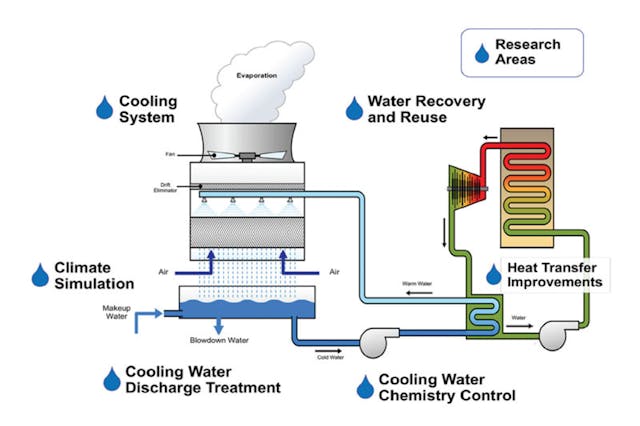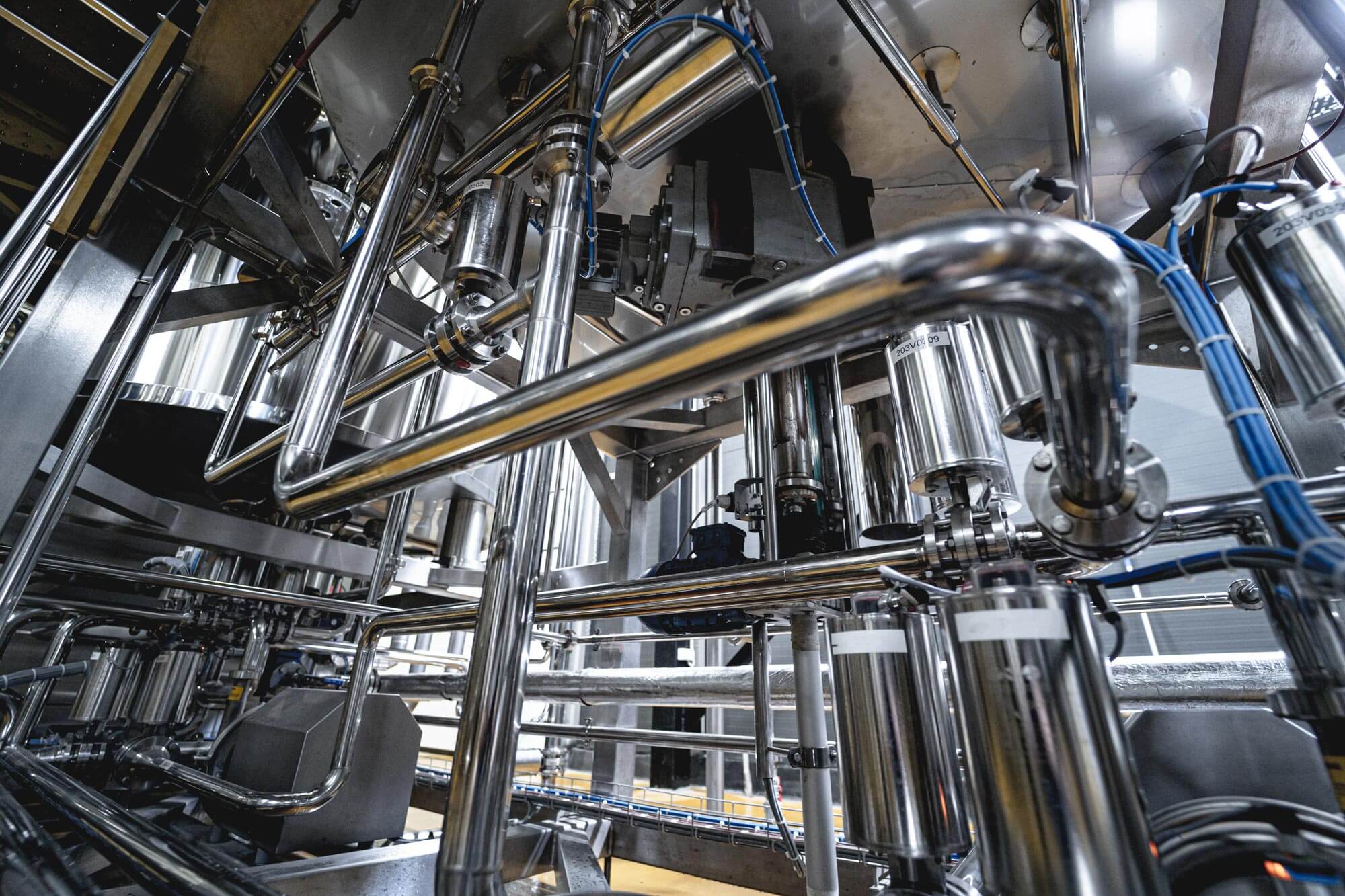Why DVS Heat Transfer Systems Use Nanotechnology to Outperform Traditional Cooling Systems
A Comprehensive Guide to Picking the Right Heat Transfer Solutions for Your Demands
Choosing the suitable Heat transfer system is vital for functional performance. Different systems satisfy various needs, influenced by variables such as temperature level variety and liquid type. Recognizing the concepts behind Heat transfer, such as convection, conduction, and radiation, is crucial. Furthermore, assessing energy resources and upkeep practices can influence long-lasting performance. A closer assessment of these considerations reveals exactly how to tailor a system to particular demands. What should one prioritize in this facility decision-making procedure?
Understanding Heat Transfer: Key Principles and Principles
Although Heat transfer may appear like a straightforward principle, it encompasses a variety of concepts that are fundamental for reliable system layout. Understanding these concepts is vital for designers and designers that intend to enhance thermal efficiency in numerous applications. Transmission, for example, includes the transfer of Heat with strong products, while convection refers to the motion of Heat within fluids. Radiation, another crucial principle, defines how Heat can be moved through electro-magnetic waves. Each of these mechanisms plays an important role in establishing how power moves within a system. By completely understanding these principles, experts can make educated decisions, making certain that Heat transfer systems run efficiently and satisfy the certain demands of their applications
Kinds of Heat Transfer Systems: An Introduction
Comprehending the concepts of Heat transfer prepares for exploring the numerous kinds of Heat transfer systems offered. Heat transfer systems can be categorized mainly right into three types: convection, conduction, and radiation. Transmission includes Heat transfer via solid products, depending on direct get in touch with in between bits. Convection, on the various other hand, happens in liquids (gases and fluids) where the movement of the fluid itself facilitates Heat transfer. Radiation entails the transfer of Heat through electro-magnetic waves and does not require a tool, allowing it to happen in a vacuum. Each type of system has distinctive characteristics and applications, making it vital for people and companies to very carefully examine their details requirements when selecting one of the most appropriate Heat transfer option.
Applications of Heat Transfer Solutions in Various Industries
Heat transfer systems play a necessary function throughout various sectors, affecting performance and product quality. In industrial production procedures, they help with precise temperature level control, while in food and beverage handling, they assure safety and preservation. Furthermore, cooling and heating and climate control systems count greatly on efficient Heat transfer to maintain comfortable settings.
Industrial Manufacturing Processes

Many commercial manufacturing procedures count heavily on effective Heat transfer systems to make best use of performance and improve product quality. In markets such as metalworking, Heat exchangers play a vital role in maintaining perfect temperatures during welding, spreading, and forging. These systems assure consistent Heat circulation, which is vital for attaining wanted material residential properties. Similarly, in the chemical production market, Heat transfer systems facilitate specific temperature level control throughout reactions, affecting return and security. In fabric manufacturing, reliable Heat management is crucial for coloring and completing processes, influencing color consistency and fabric quality. By selecting proper Heat transfer technologies, suppliers can enhance energy effectiveness and decrease functional costs, ultimately causing a more lasting and affordable production setting.
Food and Beverage Handling
Reliable Heat transfer systems are similarly vital in the food and drink processing market, where maintaining optimal temperature levels is crucial for food security and quality. These systems play a crucial role in procedures such as pasteurization, sanitation, and food preparation, making sure that items are safe for intake and keep their nutritional value. Heat exchangers, for instance, successfully transfer Heat between fluids, maximizing energy usage while minimizing temperature changes. Furthermore, refrigeration systems are essential for prolonging and protecting subject to spoiling products service life. The choice of Heat transfer modern technology straight affects operational efficiency and item integrity, making it important for food and drink suppliers to pick the proper systems customized to their particular processing needs. This cautious option eventually adds to consumer complete satisfaction and food safety.

Heating And Cooling and Climate Control
While lots of markets depend on Heat transfer systems for efficiency, COOLING AND HEATING (Home Heating, Ventilation, and A/c) plays a vital duty in maintaining indoor environment control across various setups. These systems make use of Heat transfer principles to manage humidity, temperature image source level, and air quality, making sure comfort and safety in household, business, and commercial environments. Effectively made HVAC systems boost energy efficiency, minimize operational costs, and reduce environmental effect. In industrial structures, for example, reliable environment control contributes to staff member productivity and client contentment. In industrial applications, cooling and heating systems help preserve excellent conditions for tools operation and product preservation. Choosing the best Heat transfer system is vital for meeting certain environment control demands and achieving overall system efficiency.
Evaluating Energy Sources for Heat Transfer Equipments
In examining energy sources for Heat transfer systems, a contrast of renewable energy choices and fossil gas factors to consider is crucial. Renewable resources, such as solar and wind, offer sustainable choices that can decrease environmental impact. On the other hand, fossil fuels stay prevalent because of their well-known facilities and power thickness, motivating a mindful evaluation of both options.
Renewable Energy Options

Nonrenewable Fuel Source Factors To Consider
Reviewing nonrenewable fuel source factors to consider is important for the effectiveness and sustainability of Heat transfer systems. Fossil gas, such as all-natural gas, oil, and coal, are standard power sources that offer considerable Heat result, making them popular selections for commercial and property applications. Their ecological effect, consisting of greenhouse gas discharges and source depletion, increases issues. When picking a heat transfer system, it is crucial to assess the schedule, cost, and governing factors navigate here connected with these gas. Additionally, the performance of fossil fuel systems should be taken into consideration, as greater effectiveness can minimize some ecological drawbacks. Eventually, a balanced method weighing performance and sustainability can direct decision-makers towards one of the most suitable Heat transfer option for their details needs.
Elements to Consider When Selecting a Heat Transfer System
Selecting an appropriate Heat transfer system calls for cautious factor to consider of different variables that can considerably affect efficiency and performance. One crucial variable is the operating temperature level array, which dictates the materials and design suitable for the application. Additionally, the sort of liquid made use of in the system-- whether gas or fluid-- impacts Heat transfer performance and compatibility. The system's dimension and capacity should align with the particular needs of the operation to prevent inadequacies. Energy source availability is also vital, influencing operating costs and sustainability. Additionally, the installment atmosphere, consisting of room restraints and accessibility for upkeep, plays a substantial function in system option. Finally, regulatory compliance and security standards must be taken into consideration to ensure the system meets all legal requirements.
Maintenance and Effectiveness Optimization for Heat Transfer Solutions
Maintaining Heat transfer systems is vital for making certain maximum effectiveness and longevity. Routine maintenance activities, such as cleaning Heat exchangers and examining insulation, help avoid efficiency losses as explanation a result of fouling and thermal linking. Furthermore, keeping an eye on system parameters, including stress and temperature, permits very early discovery of anomalies, minimizing downtime and pricey repair services. Implementing a precautionary upkeep routine can optimize efficiency and expand the lifespan of elements. Furthermore, updating to innovative control systems can enhance operational performance by getting used to varying conditions and tons. By focusing on upkeep and performance optimization, drivers can attain minimized energy consumption, lower operational costs, and enhanced total system integrity, ultimately resulting in much better resource utilization and a more lasting procedure.
Future Fads in Heat Transfer Technologies
As industries increasingly focus on sustainability and power performance, future fads in Heat transfer modern technologies are readied to go through considerable improvements. Innovations such as advanced products, consisting of carbon nanotubes and nanofluids, assure improved thermal conductivity and efficiency. Additionally, the combination of renewable energy sources right into Heat transfer systems is getting momentum, promoting environment-friendly options. Smart innovations, including IoT sensors, are anticipated to revolutionize surveillance and control, enabling real-time data analysis for maximized performance. Furthermore, the development of modular and portable systems will certainly promote easier installment and maintenance, providing to varied applications. These advancements show a change towards more sustainable, efficient, and adaptable Heat transfer solutions, aligning with international power goals and ecological requirements.
Frequently Asked Questions
What Are the Ecological Effects of Heat Transfer Solutions?
The environmental effects of Heat transfer systems can include greenhouse gas discharges, energy intake, and potential thermal contamination. Additionally, incorrect disposal of inefficiencies and materials can contribute to resource depletion and ecosystem disruption.
How Do I Calculate the Cost-Effectiveness of a Warmth Transfer System?
To compute the cost-effectiveness of a heat transfer system, one have to analyze first prices, operational costs, maintenance demands, and energy performance, contrasting these variables versus the expected life-span and performance of the system.
Can Heat Transfer Solution Be Made Use Of in Residential Setups?
Heat transfer systems can certainly be used in property setups. They give reliable home heating and cooling down options, making homes a lot more comfy while potentially lowering energy expenses. Their convenience permits for different applications in residential atmospheres.
What Safety Laws Put On Heat Transfer Solutions?
Safety and security guidelines for Heat transfer systems normally include standards on installment, procedure, and maintenance. Compliance with neighborhood building ordinance, supplier requirements, and industry standards is necessary to ensure effective and safe system efficiency in different applications.
Exactly How Do Different Materials Affect Heat Transfer Efficiency?

Conduction, for circumstances, includes the transfer of Heat with strong products, while convection refers to the activity of Heat within fluids. Understanding the principles of Heat transfer lays the foundation for discovering the various types of Heat transfer systems readily available. Heat exchangers, for circumstances, efficiently move Heat in between liquids, maximizing power usage while minimizing temperature fluctuations. In assessing energy sources for Heat transfer systems, a comparison of renewable energy alternatives and fossil fuel factors to consider is necessary. Steels, such as copper and light weight aluminum, conduct Heat effectively, whereas insulators like rubber and glass slow down Heat circulation.